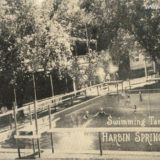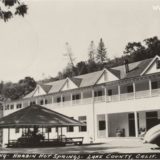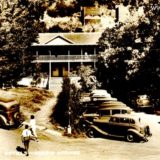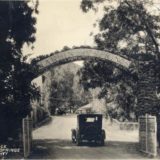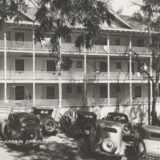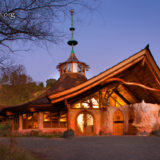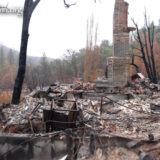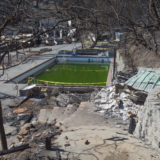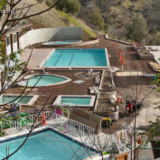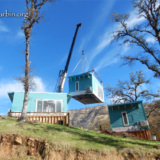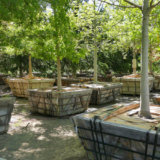History of the Springs
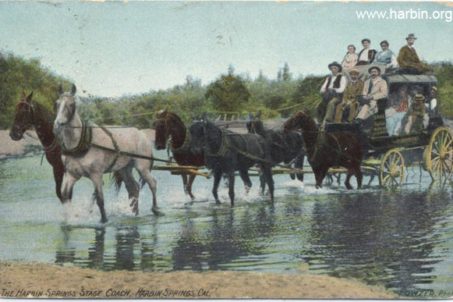
For hundreds of years, this land and its springs were a sacred healing place for the region’s Native people. This was during an era when different groups may have fought over territory or resources. But the paths to these springs and their surrounding land were collectively held as neutral territory, and members of all Nations knew they could come here safely, enjoy the waters, and abide in peace. Around 1856, a non-Native named James M. Harbin is believed to have taken control and ownership of this land; and the names Harbin Hot Springs and Harbin Mountain come from him.
James Harbin’s tenure didn’t last long, and by 1870, the next owner, Richard Williams, had built the Harbin Springs Health and Pleasure Resort on this location, featuring a large hotel building on the hillside below the springs. This hotel burned to the ground and was replaced by two new hotels, which also burned long ago; and the land changed hands and character several times over the ensuing 100 years. It was owned and operated, variously, as a Victorian resort, then a hunting lodge, then a boxing camp, and then a free-form university and experimental drug haven for hippies (this much-maligned incarnation was during Robert Hambrick’s ownership, in the late 1960s). No matter its operational focus, though, the hot springs themselves have always been at the heart of the Harbin experience. (For a more detailed look into all this history, we recommend the book Harbin Hot Springs – Healing Waters, Sacred Land, by Ellen Klages.)
In 1972, the then-neglected and dilapidated property was purchased by Robert Hartley (whom many know today as Ishvara). He and the community of people who were drawn here began repairing and improving the springs, pools, and buildings; and over the next two decades, Harbin attracted a vital residential community, and ever-increasing numbers of visiting guests. In 1975, the ownership of Harbin Hot Springs was reorganized, as Hartley sold it to Heart Consciousness Church, Inc., the non-profit religious organization that continues to own the property and run Harbin Hot Springs today as a retreat center.
During the Valley Fire of 2015, more than 35 Harbin buildings of various functions were burned beyond repair, while thousands of mature shade trees, and huge swaths of forest were destroyed. But throughout the entire devastation of the Valley Fire and its tumultuous aftermath, Harbin’s springs continued to flow. By 2019, all the burned building debris throughout Harbin’s property had been cleared, the Mainside Pool Area structures, and concrete decking has all been replaced, and temporary buildings put into service for guests. And so the rebuilding of Harbin’s permanent facilities continues – even as we welcome guests back to the springs.
The next phase of Harbin’s history remains in some ways unknown. It’s a history that is being written as we live it – and much like the springs themselves, it’s fluid and dynamic. We hope you’ll join us, and help us make Harbin’s history together.
To change, cancel or get assistance with Reservations or Pre-Check-In, call 707-987-2477 (9 am to 8 pm)


